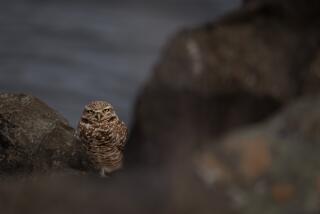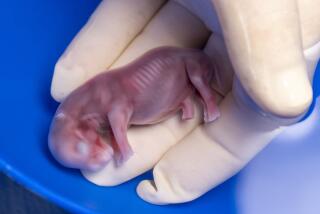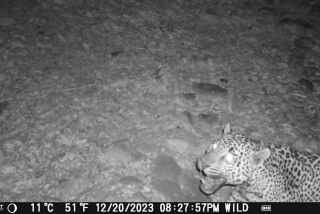Holy anole! Pinocchio lizard not extinct. But what’s with the nose?
The Pinocchio lizard -- the anole with the extra-long proboscis -- is not extinct after all. It has been rediscovered deep in the cloud forests of Ecuador. Researchers practically fell over it.
A release from Ecuador ecotourism operator Tropic quotes members of a team from Tropical Herping who had been searching for Pinocchio for three years. The Anolis proboscis, as it is properly known, is a “fantastic and mysterious creature,” said Alejandro Arteaga.
His team was searching at night, when the creature -- camouflaged by day -- can be more easily spotted. Walking along a stream in the Mindo cloud forest after midnight amid rain, tangled vegetation and the sound of croaking frogs, one team member saw the lizard on a branch, “just sleeping, covered in dew,” he said.
PHOTOS: Weird sea creatures and strange fish
“It was very thrilling,” Arteaga told LiveScience.
The Pinocchio lizard was discovered in 1953 but was believed to have become extinct in the intervening decades. In 2005, however, it was spotted again. Sightings since then have been extremely rare.
The Pinocchio lizard, once seen, isn’t easily forgotten. Its trademark “horn” appears only on the males of the species, according to Harvard herpetologist Jonathan Losos, who writes on lizards in his Annole Annals blog. Losos is among the lucky few to have seen the lizard, during a trip to Mindo in 2010.
It seems the horn plays a role in sexual selection, he writes, “either competition among males for females or mates, or female choice of males.”
In one encounter his team witnessed, the male “flourished” his horn at a female. What was really surprising to Losos, however, was that the males could move their horns. They move them before eating, to lift them out of the way. The horn, he said, “is attached at the tip of the snout, where there shouldn’t be any muscles.”
Losos says that the horn remains a mystery but scientists in Ecuador continue to collect data and breed the lizards in the lab.







